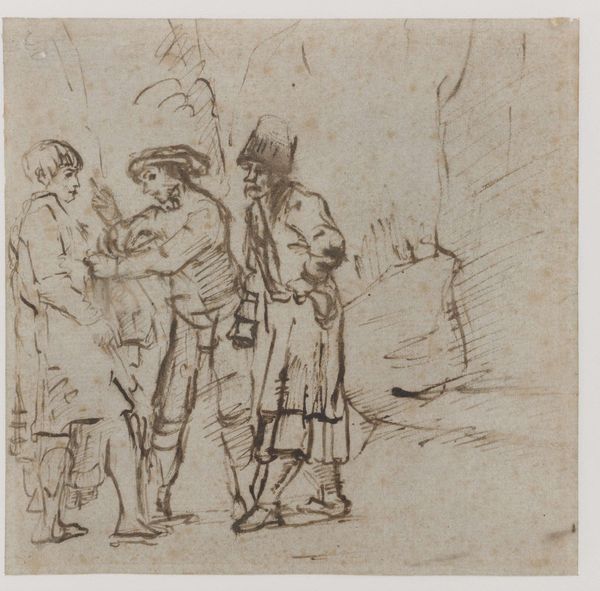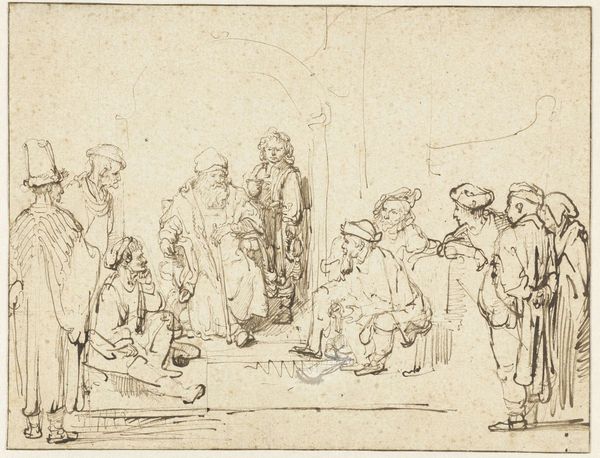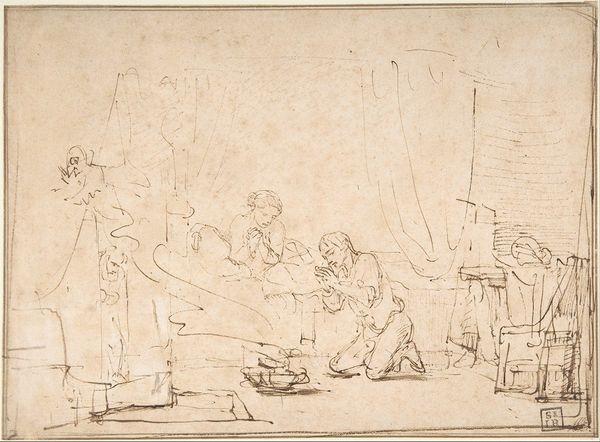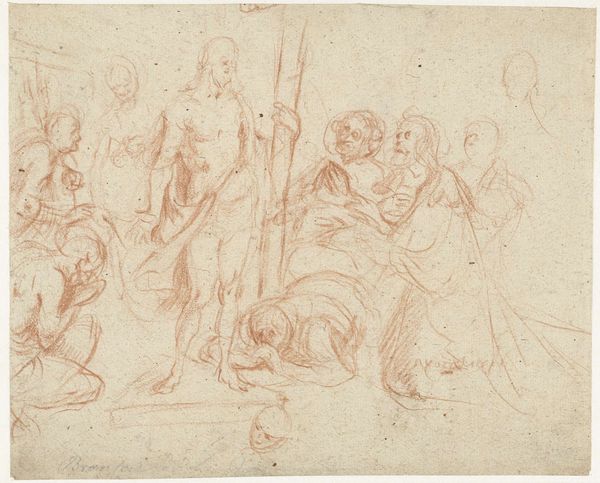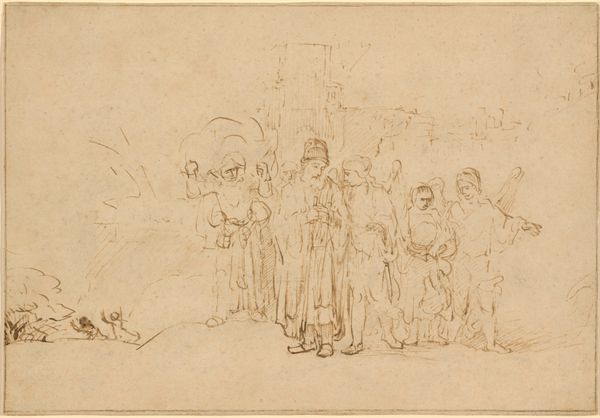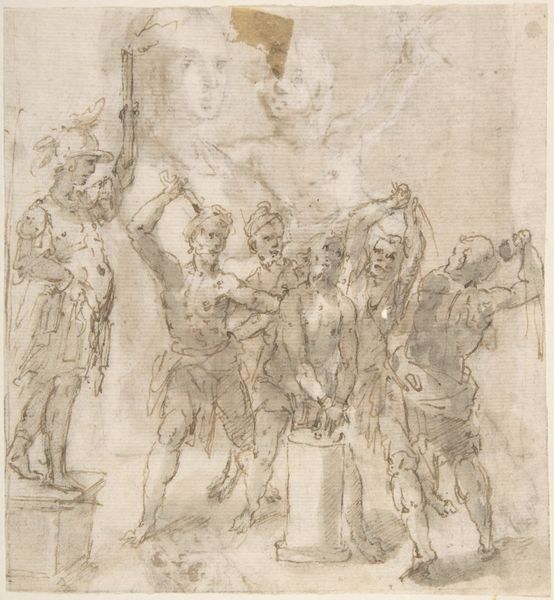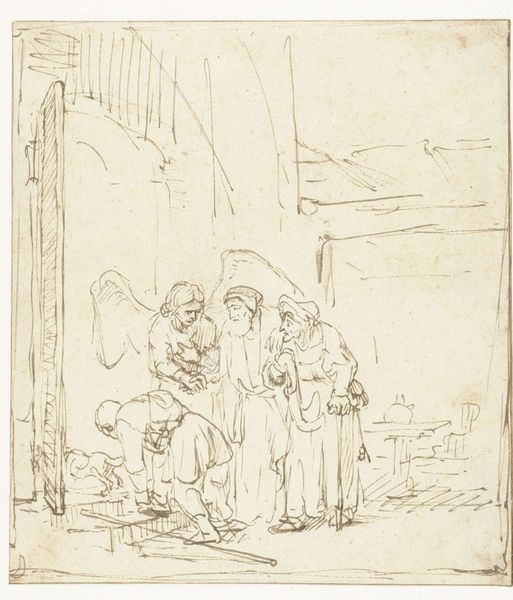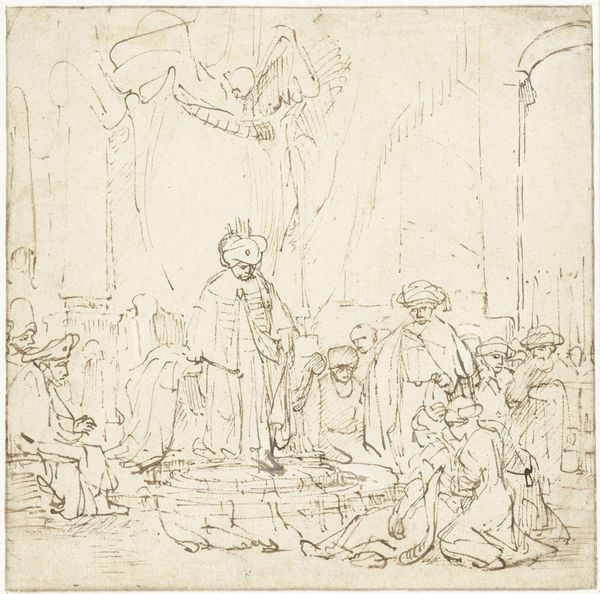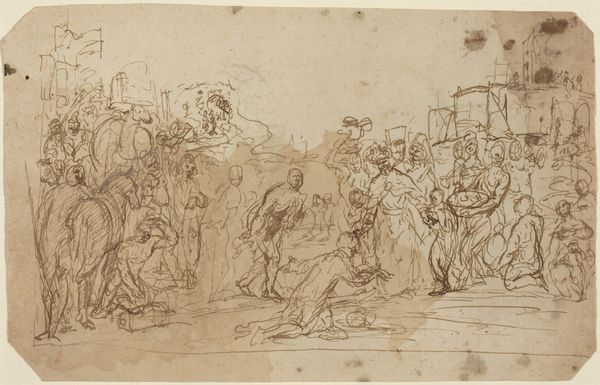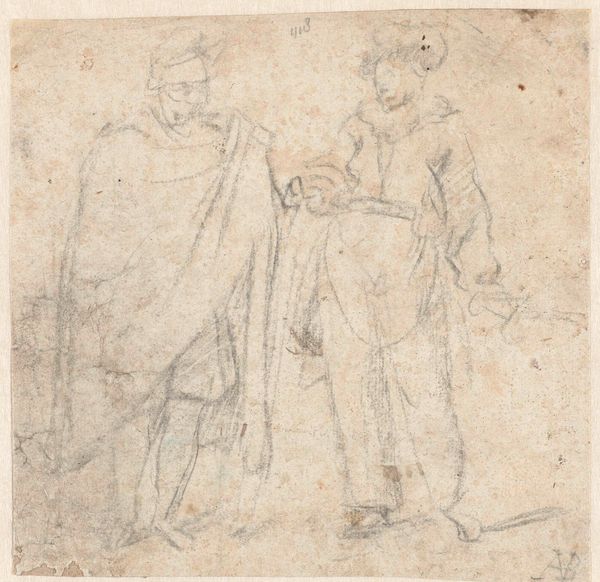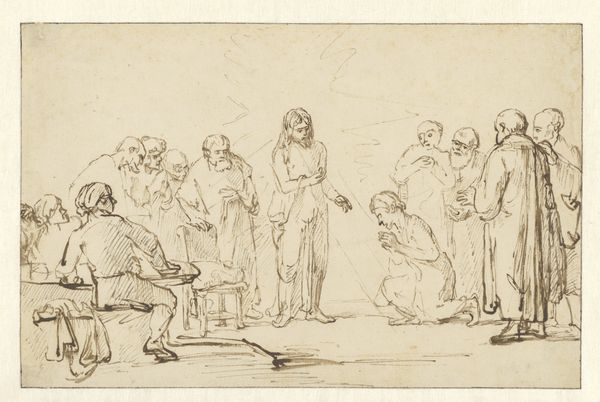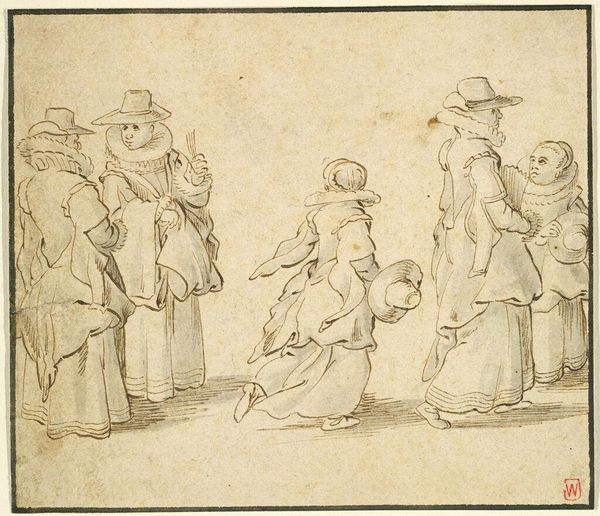
drawing, paper, ink
#
drawing
#
narrative-art
#
baroque
#
figuration
#
paper
#
ink
#
history-painting
Dimensions: height 194 mm, width 273 mm
Copyright: Rijks Museum: Open Domain
Curator: Looking at this delicate drawing, I'm immediately struck by its intimacy; it feels like a whispered secret caught on paper. Editor: Indeed. We're viewing "Tobias and the Angel Taking Leave of Raguel," created by Rembrandt van Rijn around 1650 to 1655. The Rijksmuseum holds it in its collection. The medium is ink on paper. Curator: Ink on paper… Makes you consider the scarcity of the material at the time. Paper was precious, thoughts all the more valuable. See how the figures huddle together, like warmth itself has been drawn into the center? Editor: Precisely! This subject would have resonated with the rising merchant class of Amsterdam, who traded textiles, spices, and new artistic trends, and also dealt with the complexities of long distance journeys and precarious finance. Tobias's tale of fiscal enterprise combined with family salvation provided an engaging story. The means of disseminating such moral guidance and financial astuteness are rooted in works such as this. Curator: You make a fascinating point! And isn't it amazing how, with just a few strokes of ink, Rembrandt manages to convey such profound emotion? Look at Raguel, the supposed father-in-law. He looms as a powerful patriarch while he simultaneously exudes tender sadness and protectiveness. Editor: His quick, confident linework here defies simple readings, even within what might be perceived as traditional notions of family, labor, and divinity. You find none of the sharp clean delineation typical of academic painting in, say, Italy or France, at the same time; and it has neither the scale nor polish of a painting. Curator: It feels less like a finished object and more like a thought caught in progress. It’s wonderfully incomplete. Perhaps he meant to produce something larger and more impressive, but as it stands it’s really quite special. Editor: Absolutely. These material circumstances shaped the outcome. Without doubt. The drawing gives us an interesting lens into how stories traveled at this time, and the circumstances that dictated production! Curator: Looking at this piece makes me contemplate not just the subject, but the hand that so expressively renders the feeling! Editor: Indeed. And on this small square of paper, one senses the hand not just of the artist, but of history itself.
Comments
No comments
Be the first to comment and join the conversation on the ultimate creative platform.
